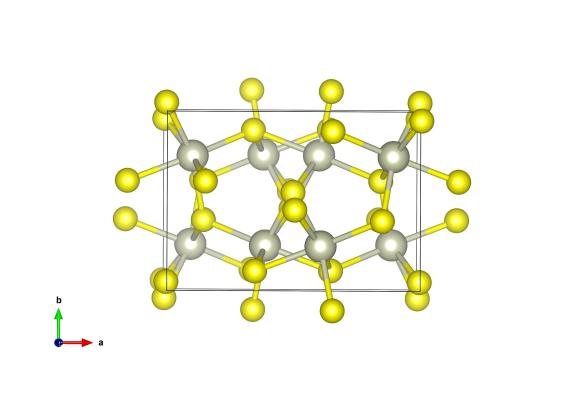An exclusive mineral – Bowieite
What does it look like?

The crystal structure of Bowieite. The rhodium atoms are grey and sulfur atoms are yellow. Image generated by the VESTA (Visualisation for Electronic and STructural Analysis) software http://jp-minerals.org/vesta/en/
What is it?
After gold, Rhodium is the most expensive metal. Most of this expense is driven by the fact that it's one of the rarest elements found on Earth, only an estimated 0.0002 parts per million (2 × 10−10) of the crust are made of this. But its use in catalytic converters has brought about a bigger demand of recent years, hence the price has rocketed. The crystal structure of pure Rhodium is face centred cubic, like gold, and it is not found in many minerals (as it's both rare and quite unreactive). However, there is this very rare mineral Bowieite – which is a rhodium sulfide (though the rhodium in the natural environment is sometimes substituted for platinum and iridium).
Where did the structure come from?
The structure of Bowieite was discovered by Parthé, Hohnke and Hulliger in 1967, and was only later named after the mineralogist Stanley Bowie (not David Bowie).






